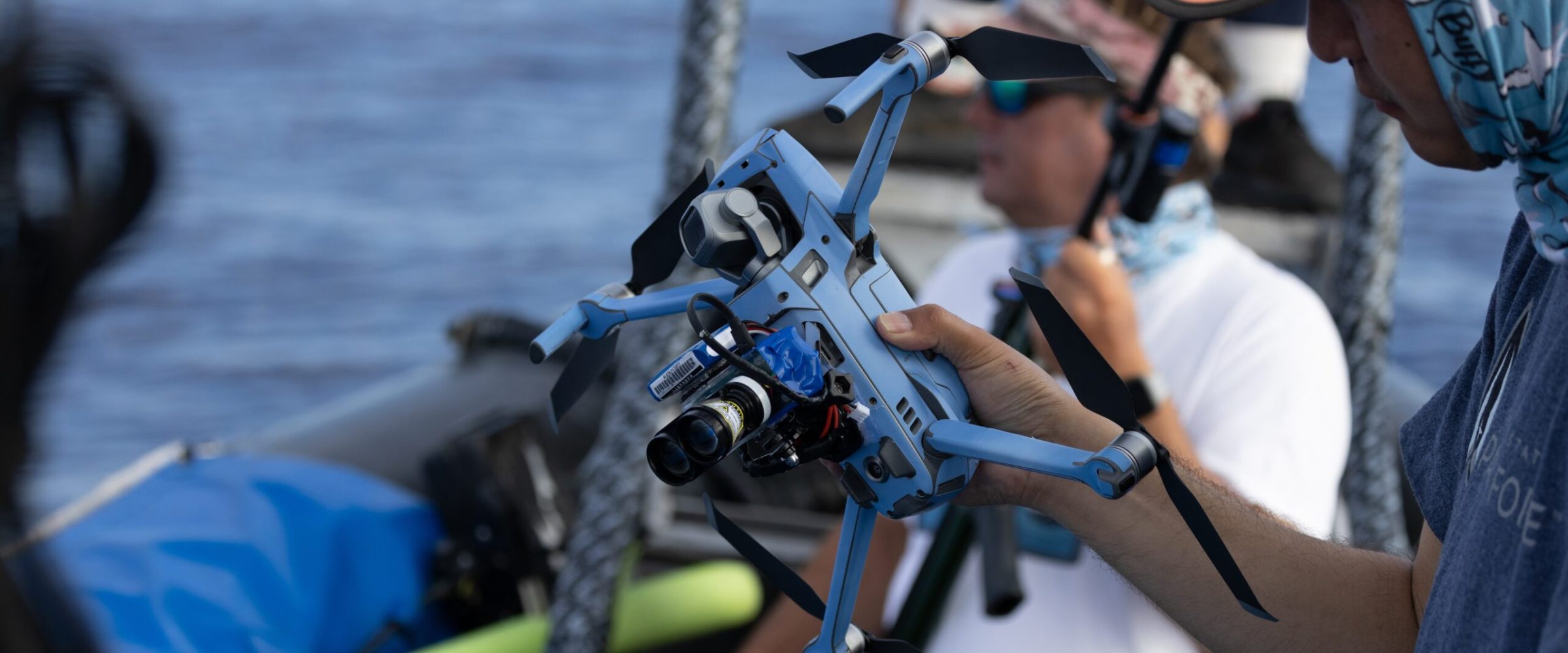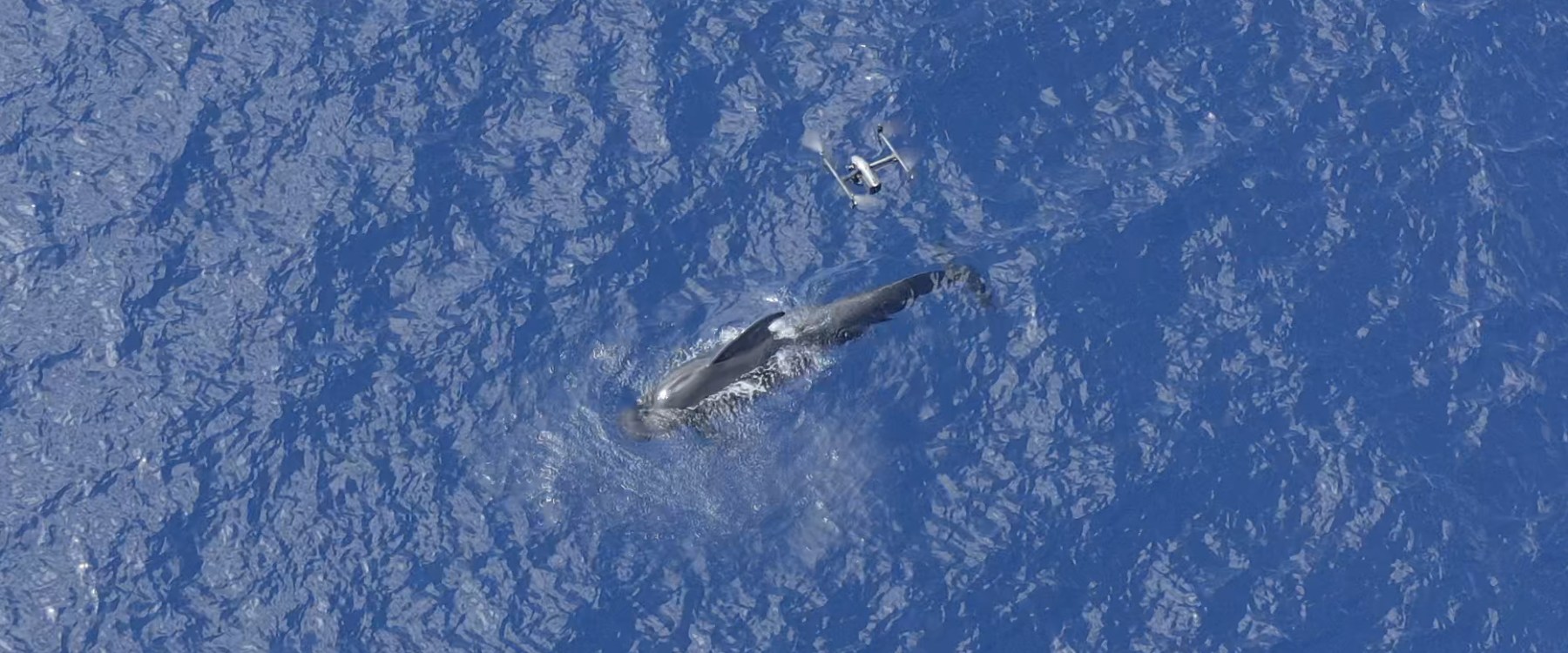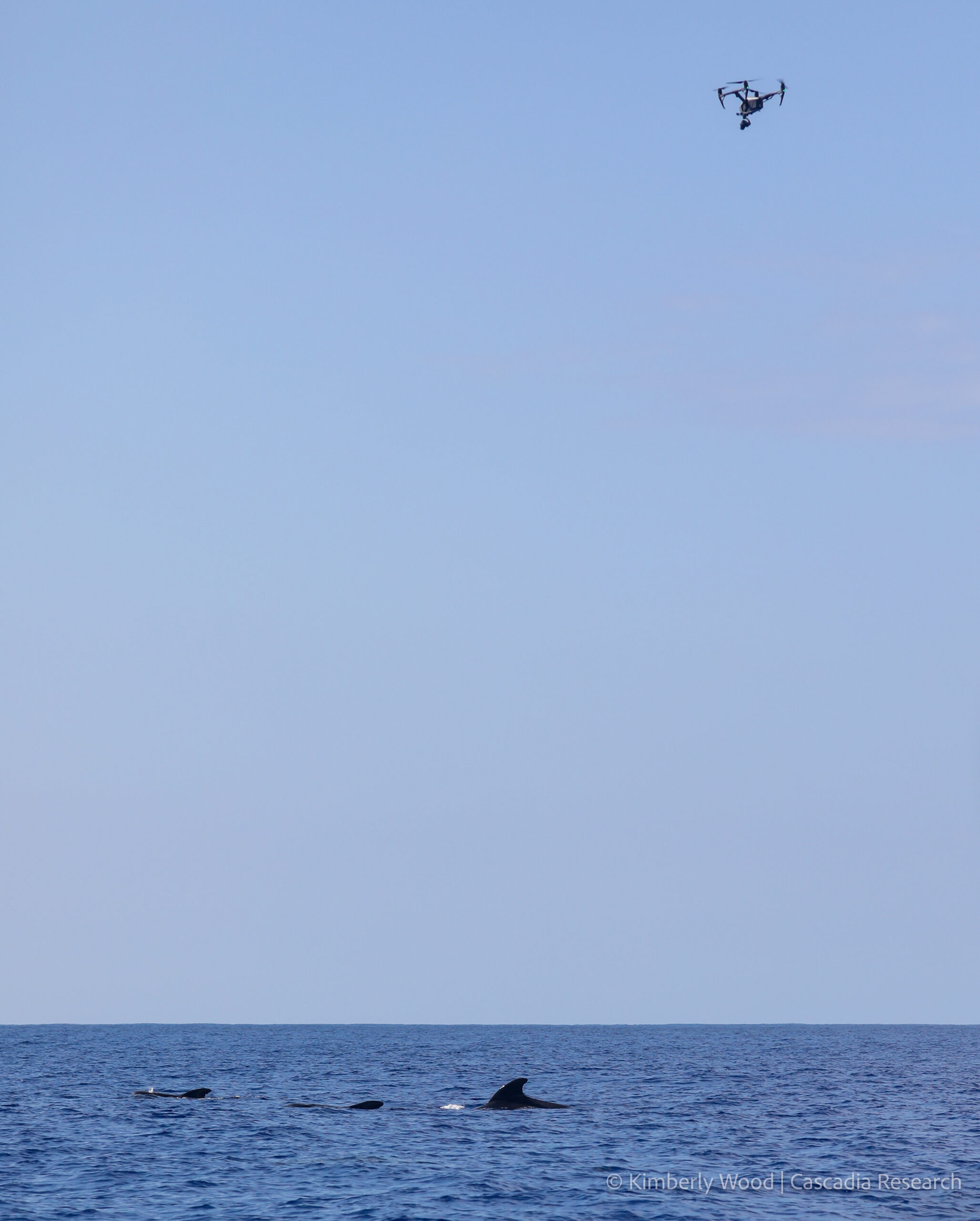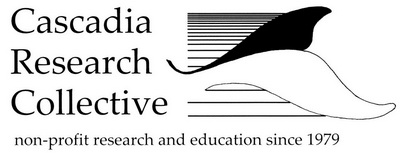DEPLOYING SUCTION-CUP ATTACHED DATA LOGGING TAGS BY DRONE TO EXAMINE DIVING AND NIGHT-TIME BEHAVIOR OF DIFFICULT-TO-APPROACH SPECIES
LOCATION: HAWAII, UNITED STATES
Robin Baird, PhD; Jordan K. Lerma
Cascadia Research Collective

PROJECT SUMMARY

Cascadia Research
Until recently, suction-cup attached data logging tags have been deployed either by a long pole or by a crossbow, in order to obtain information on the diving and sub-surface behavior of whales and dolphins (e.g., Baird et al. 2004, Hooker and Baird 1999). Researchers from Ocean Alliance have recently pioneered deploying these types of tags using a drone (UAS) on large whales, including blue, fin, and humpback whales, allowing for tagging of individuals that might not otherwise be approachable, and generally minimizing or eliminating the influence of a tagging vessel on the behavior of the individuals.

Cascadia Research
In our long-term work in Hawaiian waters we have obtained dive data from many species of odontocetes using both pole- or crossbow-deployed suction-cup attached time-depth recorders (e.g., Baird et al. 2001, 2008), and air rifle-deployed dart-attached depth- transmitting LIMPET tags (e.g., Shaff and Baird 2021), but some species are so difficult to approach that tagging with either pole, crossbow, or air rifle is not feasible at all, and for others it is almost unavoidable to tag them without disturbing them (through close vessel approach) in the process. Dwarf sperm whales and pygmy killer whales, for example, remain among the least understood species of odontocetes in the world, both due to their rarity and the difficulty in approaching and working with them. While we do know more about these species in Hawaiian waters than anywhere else, based primarily on our long-term studies (e.g., Baird et al. 2021, 2024), virtually nothing is known about their subsurface or night-time behavior. Do they feed more or less at night? How deep do they dive, and how does this vary by day and night? Building on the success of Ocean Alliance researchers, we hope to start to answer these questions, and also obtain detailed dive behavior data from other difficult-to-approach cetaceans in Hawaiian waters.

Cascadia Research


